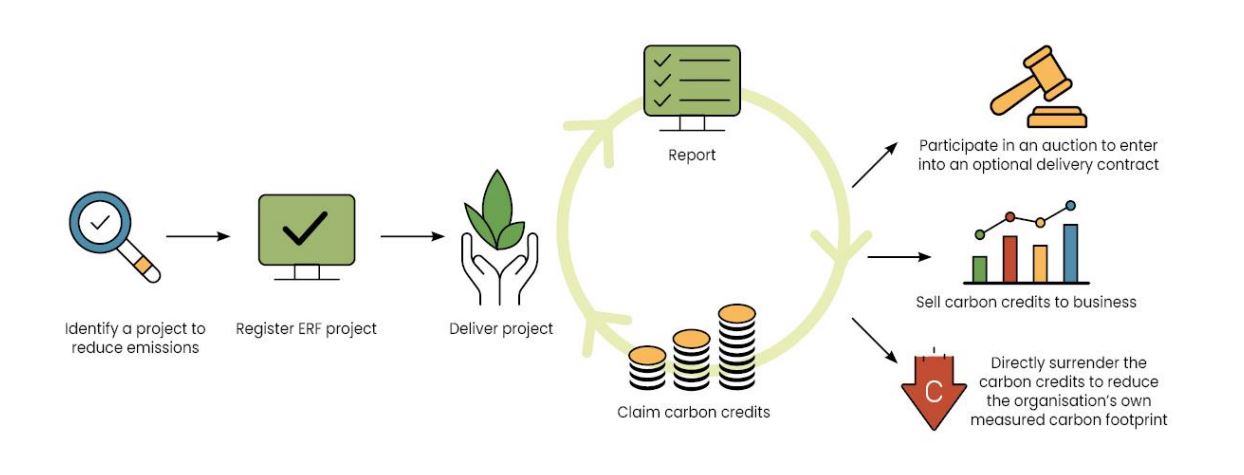Australian Government | Source |
The Australian Carbon Credit Unit (ACCU) Scheme incentivizes individuals and businesses to undertake projects that reduce emissions or store carbon. This initiative plays a crucial role in Australia's efforts to combat climate change by encouraging innovative practices across various sectors.
Key Features
- Project Diversity: Projects under the ACCU Scheme encompass a wide range of activities, including adopting new technologies, upgrading equipment, altering business practices, and managing vegetation differently to enhance carbon storage or reduce emissions.
- Emissions Reduction and Sequestration: Participants earn ACCUs for every tonne of carbon dioxide equivalent (t CO‚āā-e) emissions their projects store or avoid. ACCUs can be traded on the secondary market or sold to the government through carbon abatement contracts.
- Eligibility and Participation: The scheme is open to individuals, businesses, government bodies, and trusts. Various projects, including reforestation, revegetation, and soil carbon improvement, are eligible, offering opportunities for diverse participation. Guidance on metholody has been established for agricultural carbon credits for animal effluent management, beef cattle herd management, fertilization in irrigated cotton, feeding nitrates to beef cattle.
- Benefits Beyond Carbon: In addition to generating income through ACCU sales, projects offer environmental, economic, social, and cultural benefits. These include improved water quality, enhanced farm resilience, biodiversity conservation, and economic opportunities for indigenous communities.
- Our Role: We administer the ACCU Scheme by evaluating project applications, ensuring compliance, issuing ACCUs, and managing carbon abatement contracts. Regular reviews and improvements maintain scheme integrity and effectiveness.
- Legislative Framework: The scheme operates under the Carbon Credits (Carbon Farming Initiative) Act 2011 and Carbon Credits (Carbon Farming Initiative) Rule 2015, overseen by the Department of Climate Change, Energy, the Environment, and Water.





